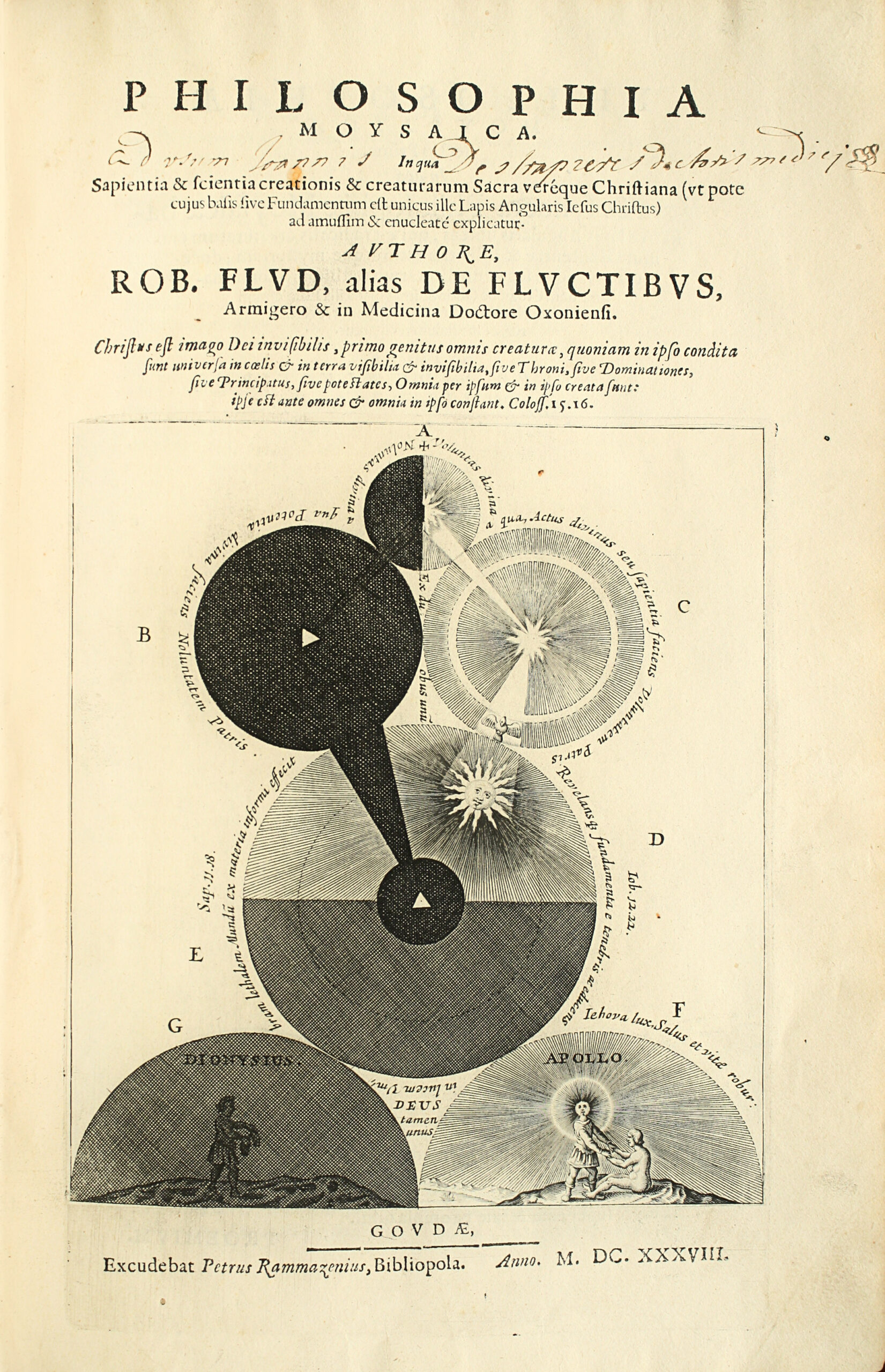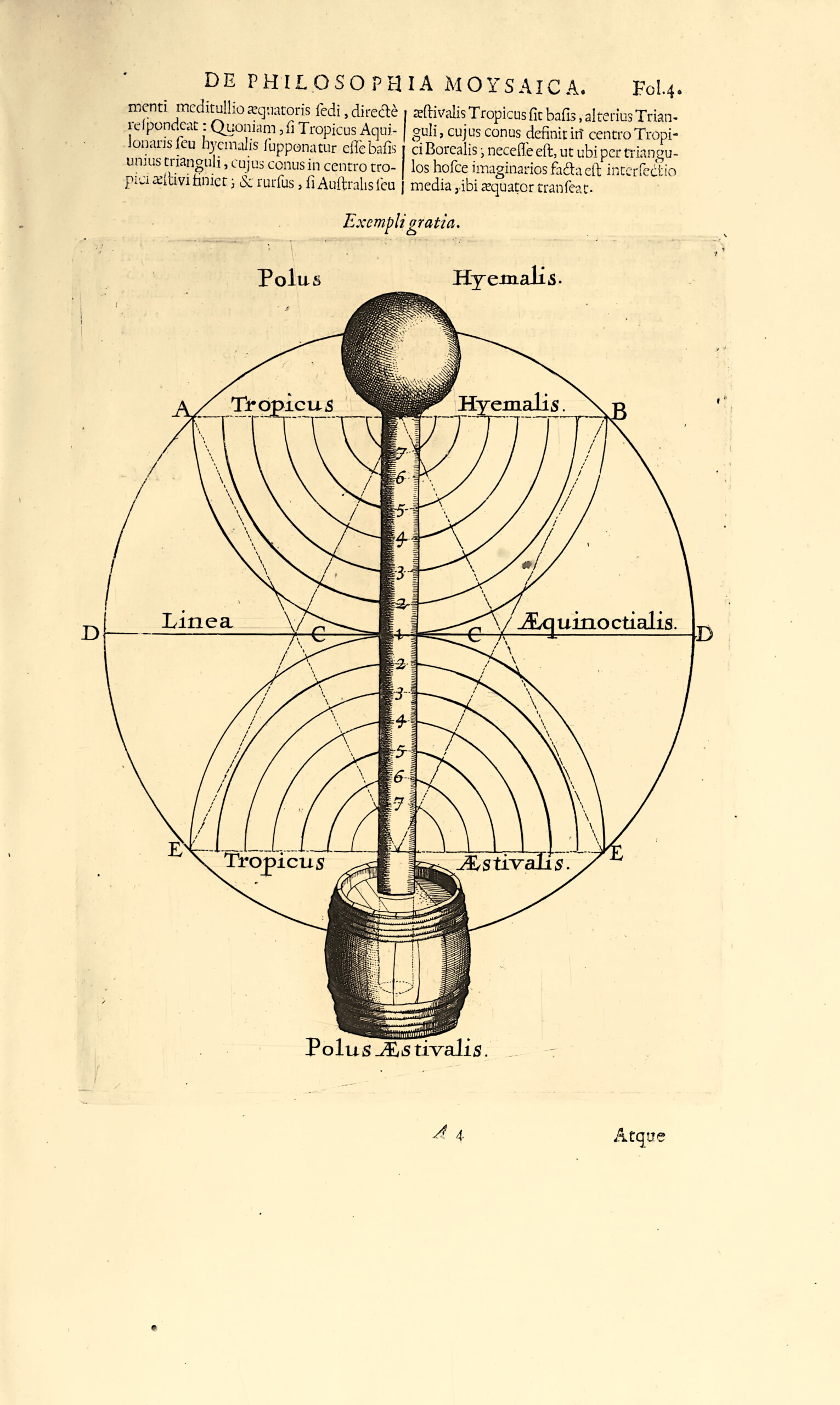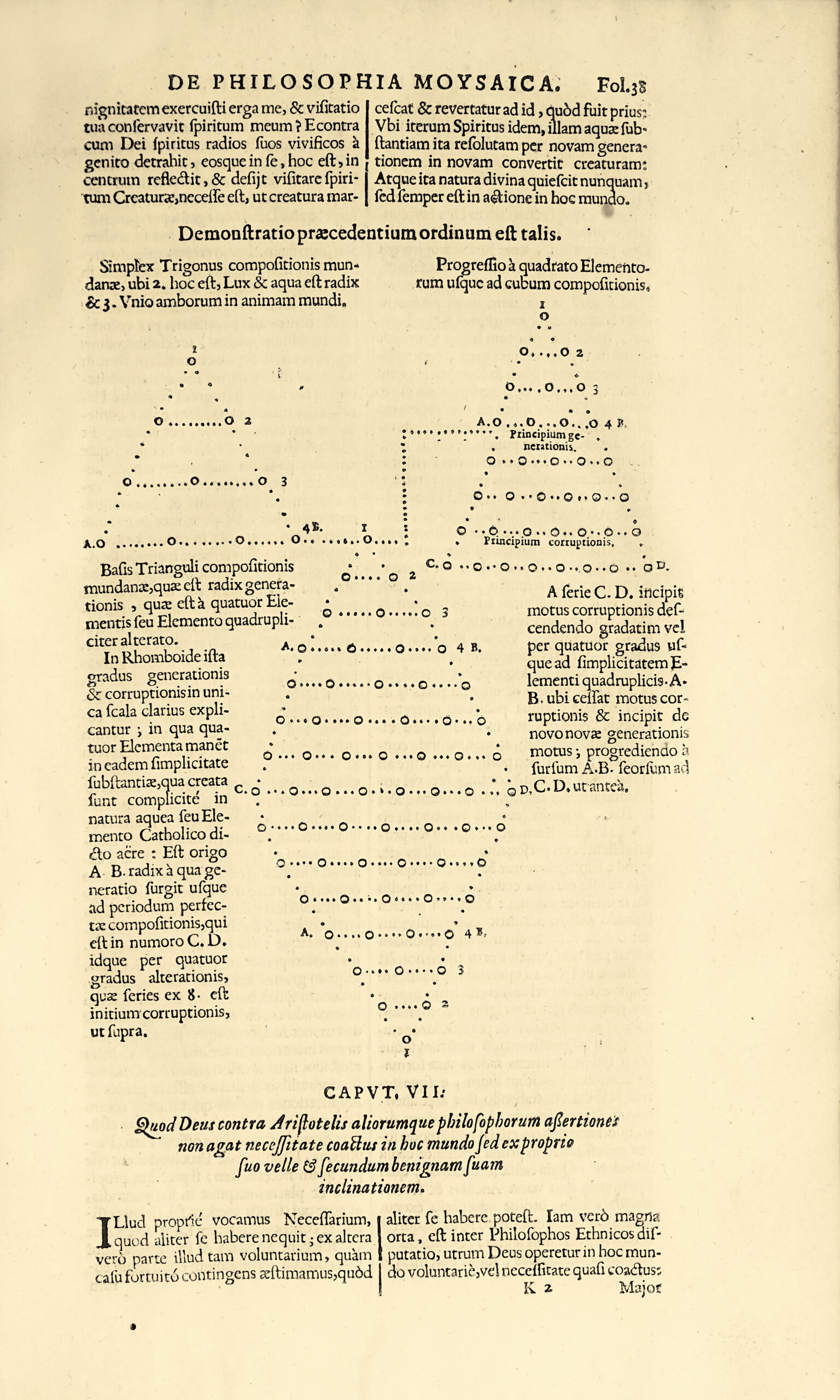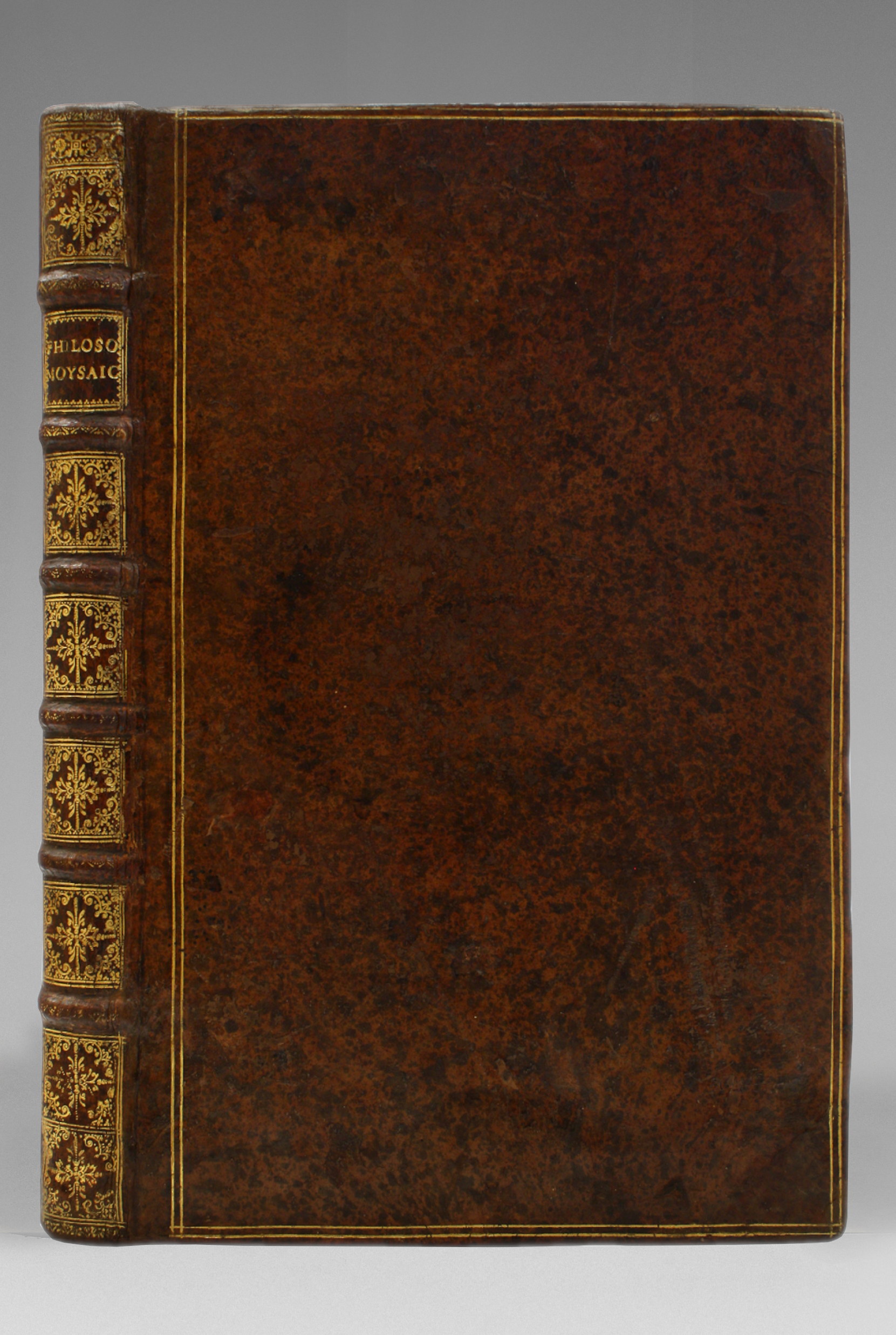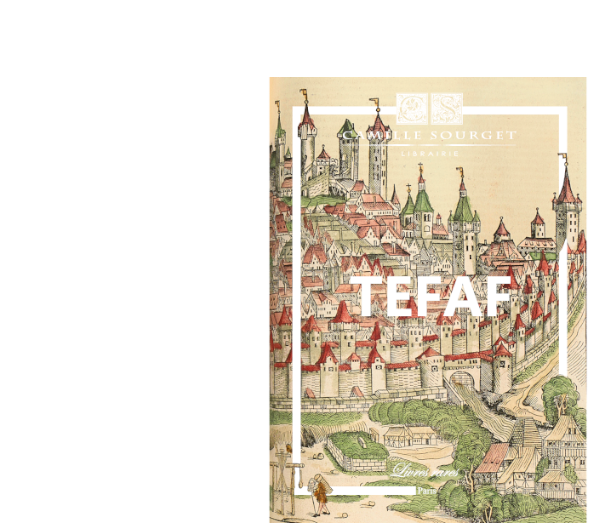Goudae, Petrus Rammazenius, 1638.
Gran en-4 de (4) ff. incluyendo el título grabado, 144 ff. (numerados 152 por error)0; 30 ff., (1) f. de errata encuadernado entre los ff.28 y 29, numerosas ilustraciones en el texto. Encuadernado en plena piel marrón jaspeada de la época, doble filete dorado enmarcando las tapas, lomo con nervios adornado con florones dorados, cortes rojos sobre jaspeados. Encuadernación de la época.
317 x 195 mm.
Edición original póstuma del último ensayo de Robert Fludd sobre la Creación.
Sir William Osler, Bibliotheca Osleriana: Un catálogo de libros que ilustran la historia de la medicina y la ciencia, n°2629; DSB V, 47ff. – Ferguson I, 284. – Wheeler Gift 112-113. – Mottelay S. 554. – Gardner 237 & 236. – Wellcome I, 2331 & 2332. – Poggendorff I, 763 (solo parte I).
En su obra, Robert Fludd (1574-1638), uno de los más famosos filósofos y alquimistas ingleses, demuestra la igualdad entre el Sol – fuente de luz y vida – y Dios.
‘In the first half of the seventeenth century [Fludd] was one of England’s best known philosophers. Certainly few Englishmen of his day managed to draw the attention of such a distinguished group as Kepler, Mersenne, and Gassendi – each of whom wrote at least one work discussing, and usually complaining of, Fludd’s theories. To many Europeans he seemed the most prominent of all English philosophers of his day ‘Fludd, like most other Renaissance scientists, and certainly like all Paracelsians, had a bitter hatred of Aristotle even though Aristotelian influences are evident throughout his work. As his authority he preferred to turn to God’s two books of revelation – one, His written book, the Holy Scriptures, and the other, nature, God’s book of Creation Fludd stated that the origin of all things may be sought in the dark chaos (potential unity) from which arose the light (divine illumination or actual unity). He affirmed that there is true unity in this dichotomy since «Light was unto the eternall unity all one with darkness, though unto our weak capacities they are opposite in property». Continuing, he explained that it was from the darkness or shades of the chaos through the divine light that there appeared the waters which are the pervasive matter of all other substances. This is then true Mosaic philosophy, which is built upon the three primary elements of darkness, light, and the waters or the Spirit of the Lord. And it is with the aid of this divine knowledge that we may bring order even out of the confusion found in the writings of the ancients on the subject. With a careful analysis of their texts Fludd showed that when Aristotle wrote of the prima materia, Plat of the hyle, Hermes of the umbra horrenda, Pythagoras of the «symbolical unity», and Hippocrates of the deformed chaos, they were all writing in reality of the darkness or the dark abyss of Moses. Similarly by some name or another all of these philosophers knew something of the Mosaic «light» and «waters». However, in their interpretations they often varied far from the truth and it is to the works of Plato and the Pymander of Hermes that the true adept is urged to go for enlightenment’ (Debus, The English Paracelsians pp. 105-109).
Discípulo de Paracelso, defiende sobre todo en esta obra famosa la medicina magnética, que lo lleva a la medicina transplantatoria: Fludd expone así las virtudes de la transplantación de una enfermedad entre los hombres, los animales y los vegetales.
La edición incluye finalmente la respuesta de Fludd a la refutación de esta obra publicada por el sacerdote escocés Foster: Responsum ad Hoplocrisma-Spongum M. Fosteri (Ibid., id., 1638 – 30 ff.).
La obra está ilustrada con un título grabado en cobre (repetido al inicio de la segunda parte) y con unas 30 ilustraciones en el texto, de las cuales 4 son grabados en cobre.
Bello ejemplar conservado en su encuadernación de la época.
Procedencia: A N. Brugière de Lamotte (ex-libris grabado) y ex-libris manuscrito de la época en el título.

